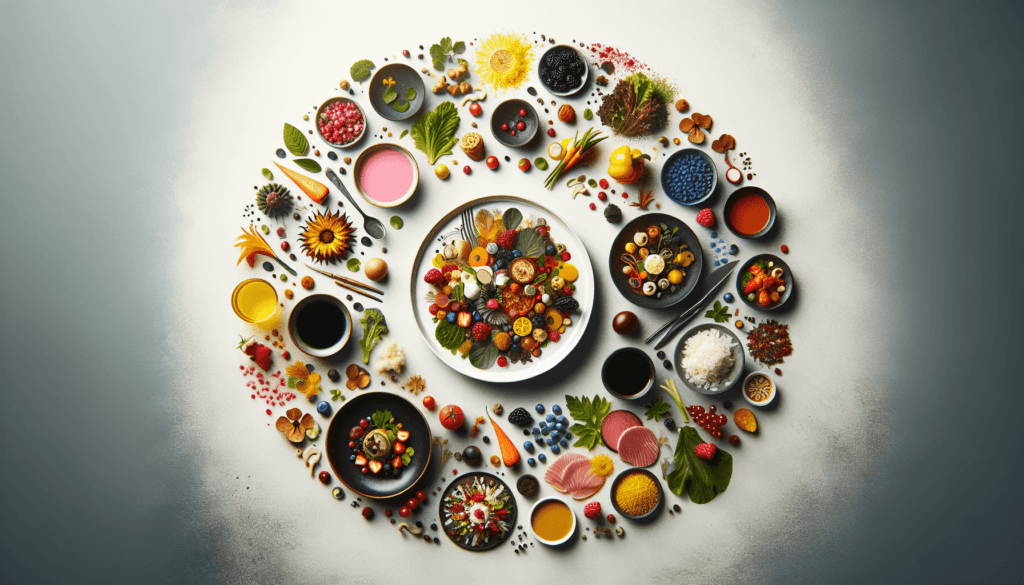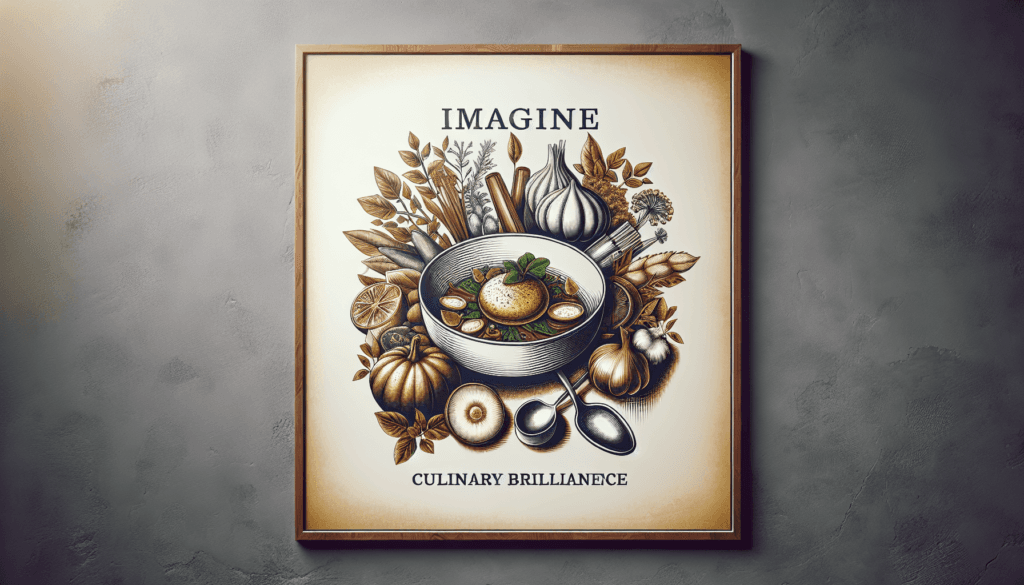Which Country is the Best to Become a Chef?
Have you ever wondered which country might be the best place to channel your inner culinary genius and truly live the chef’s dream? The culinary world is vast and varied, and choosing where to hone your skills and perhaps make a career as a chef is no small decision. Each country offers a unique flavor, not only in its dishes but also in its culinary landscape, traditions, and opportunities.
In today’s globalized world, the kitchen is no longer just a room in your house; it’s a stage for creativity, tradition, and innovation. From the age-old techniques of rustling up quintessential dishes to the avant-garde experiments happening in state-of-the-art gastronomy labs, becoming a chef in the right country can transform your career. That’s why it’s crucial to take a detailed look at the culinary opportunities across the globe to see what fits best with your ambition and style.
Table of Contents
Historical Context
The Evolution of the Culinary Profession
Picture this: centuries ago, cooks were the unsung heroes of royal courts. Now, modern chefs are celebrated like rock stars. This evolution has its roots in several historical traditions. For instance, the French Revolution was a catalyst for democratizing fine dining. Before that, only the elite had access to luxurious cuisine. Post-revolution, many of the chefs who worked in aristocratic homes found themselves offering these experiences to the everyday citizen, thus revolutionizing the culinary scene.
The culinary profession has gained prominence worldwide, with notable culinary schools and certification institutes sprawling across continents. Chefs have become not just artisans of taste but also media personalities and educators. The question then evolves: which country nurtures this transition from the kitchen to the limelight best?
From Markets to Michelin Stars
The shift from local markets to Michelin stars highlights the journey from basic sustenance to elevated cuisine. But which countries have historically led this transformation? France stands out with its haute cuisine and the Michelin Guide. Italy, with its deep-rooted love for trattorias, contrasts that with simple, heartwarming meals. Each country’s culinary journey has informed the training ground for chefs.
Current Trends in Global Culinary Landscape
Embracing Culinary Diversity
In today’s culinary environment, the demand for international fusion cuisine is immense. Chefs are navigating a landscape where knowing how to whip up a local delicacy might be just as important as mastering sashimi or mastering the intricacies of molecular gastronomy. Countries like the United States, particularly cities such as New York and San Francisco, are melting pots of global flavors and have a robust industry supporting innovation.
Sustainable Practices
Sustainability isn’t just a buzzword; it’s an imperative practice reshaping the culinary world. Nations like Denmark are pioneering sustainable culinary practices, with chefs using locally sourced, seasonal ingredients to reduce carbon footprints. The acclaimed Noma restaurant is a testament to Denmark’s leadership, inspiring chefs globally to reevaluate not just what they cook, but how they source and serve their meals.

Key Concepts and Definitions
Gastronomy and Culinary Arts
Before diving into the details of where to become a chef, let’s clear up some terms. Gastronomy is more than merely cooking; it combines the art and science behind food. Culinary arts, however, focus more on cooking techniques, flavors, and presentation. Each country embraces these concepts differently, influencing where you might want to study or work.
The Michelin Guide
The Michelin Guide has been a longtime staple in evaluating and awarding culinary excellence. Originating in France, its influence spans globally, affecting dining reputations and chefs’ careers. While not every country has Michelin-starred restaurants, those that do, such as Japan and Spain, offer an exciting playground for ambitious chefs aiming for culinary prestige.
Breaking it Down: Country-Specific Examinations
France: The Classic Epicenter
France, with its deep gastronomic roots, offers everything from traditional dishes to modern French cuisine. Revered for culinary schools like Le Cordon Bleu, France’s commitment to culinary arts is unparalleled. But do traditional methods stifle innovation, or do they set a crucial foundation?
Italy: A Life of Simple Elegance
Italian cuisine thrives on simplicity, emphasizing fresh, local ingredients and traditional family techniques. Parma and Bologna are not just places but experiences that offer unparalleled exposure to authentic Italian culinary practices. With a community-centric approach, Italy offers an intimate and fulfilling environment for budding chefs.
Japan: Precision and Perfection
Japan epitomizes the notion of precision in culinary arts. Its techniques and disciplines in knife skills and sushi-making are revered worldwide. Yet, does the discipline allow room for personal expression, or is it a more conforming path in the culinary arts?
United States: Fusion and Innovation
The U.S. is a playground for fusion cuisine, marked by innovative approaches to cooking. Cities like New York and Los Angeles serve an endless buffet of diverse cultures. The opportunity to blend different culinary traditions allows a chef to consistently push boundaries.
Spain: The Avant-Garde Trailblazer
Spain’s influence on molecular gastronomy and avant-garde culinary practices cannot go unnoticed. Chefs here experiment unapologetically, guided by traditions yet not confined by them. So, does the country’s innovative spirit provide its chefs with an edge in the global realm?

Examples and Case Studies
Suffused History: The French Influence
Consider the renowned Escoffier, often hailed as the father of modern French cuisine. His legacy continues to impact chefs worldwide. Julia Child, another iconic figure, carried the torch of French culinary arts to American kitchens through her work. Both figures exemplify France’s powerful pull, teaching chefs to respect tradition while embracing the new.
A Modern Twist: Denmark’s Sustainable Cuisine
Noma, recently ranked as the world’s best restaurant, offers a quintessential lesson in sustainability and innovation. It adopts unique preparation methods like fermentation, significantly influencing global chefs. Denmark’s culinary philosophy extends the conversation beyond food to larger societal and ecological communities.
Different Points of View: Comparing Countries
| Aspect | France | Italy | Japan | United States | Spain |
|---|---|---|---|---|---|
| Traditions | Classic, rigid techniques | Simplicity-focused, family-driven | Precision, discipline | Innovative, culture fusion | Tradition-blended innovation |
| Culinary Schools | Prestigious | Few, but tightly-knit | Highly focused on technique | Numerous and diverse | Known for avant-garde techniques |
| Michelin Mentioned | High concentration | Fewer compared to France | Renowned for precision | Diverse representation | Notable for groundbreaking ideas |
| Gastronomy Trends | Traditional vs Modern | Simple, regional | Seafood-centric, meticulous | Multi-cultural, diversified | Molecular gastronomy leader |
| Career Opportunities | Classic establishments | Small, community-centric | Robust, especially in sushi | Rich and varied | Growing and innovative |
Impact Assessment
Balancing Tradition and Innovation
Countries like France may have more traditional approaches, but they build a strong foundation. On the other hand, the U.S. embraces culinary diversity, offering a wild west for creativity. The balance between tradition and innovation can determine a chef’s success and personal satisfaction in their culinary journey.
Global Influence
For a chef aspiring to gain global recognition, countries with a significant media presence and international culinary festivals can serve as great platforms. Countries offer unique brand positioning through food festivals, such as Japan with its ramen festivals and Italy with its pasta extravaganzas.
Future Directions and Implications
What Lies Ahead?
Globalization has homogenized many aspects of culture, but food remains gloriously unique. Looking ahead, expect to see countries further refining their culinary identities. As sustainability and ethics in sourcing grow more significant, regions that quickly adapt could set future benchmarks for culinary standards.
The Larger Picture
Becoming a chef isn’t just about perfecting recipes; it’s about understanding where the industry stands globally. The roles of chefs are morphing into that of sustainable advocates, cultural ambassadors, and innovative artists. Countries that shape their culinary landscapes around these roles will likely draw and nurture the next generation of culinary talent.
In conclusion, each country presents unique offerings that could suit different aspirations and styles. Where you choose to become a chef will shape not only your culinary skills but your entire career. So, which country piques your interest, and where do you see your culinary journey beginning?
